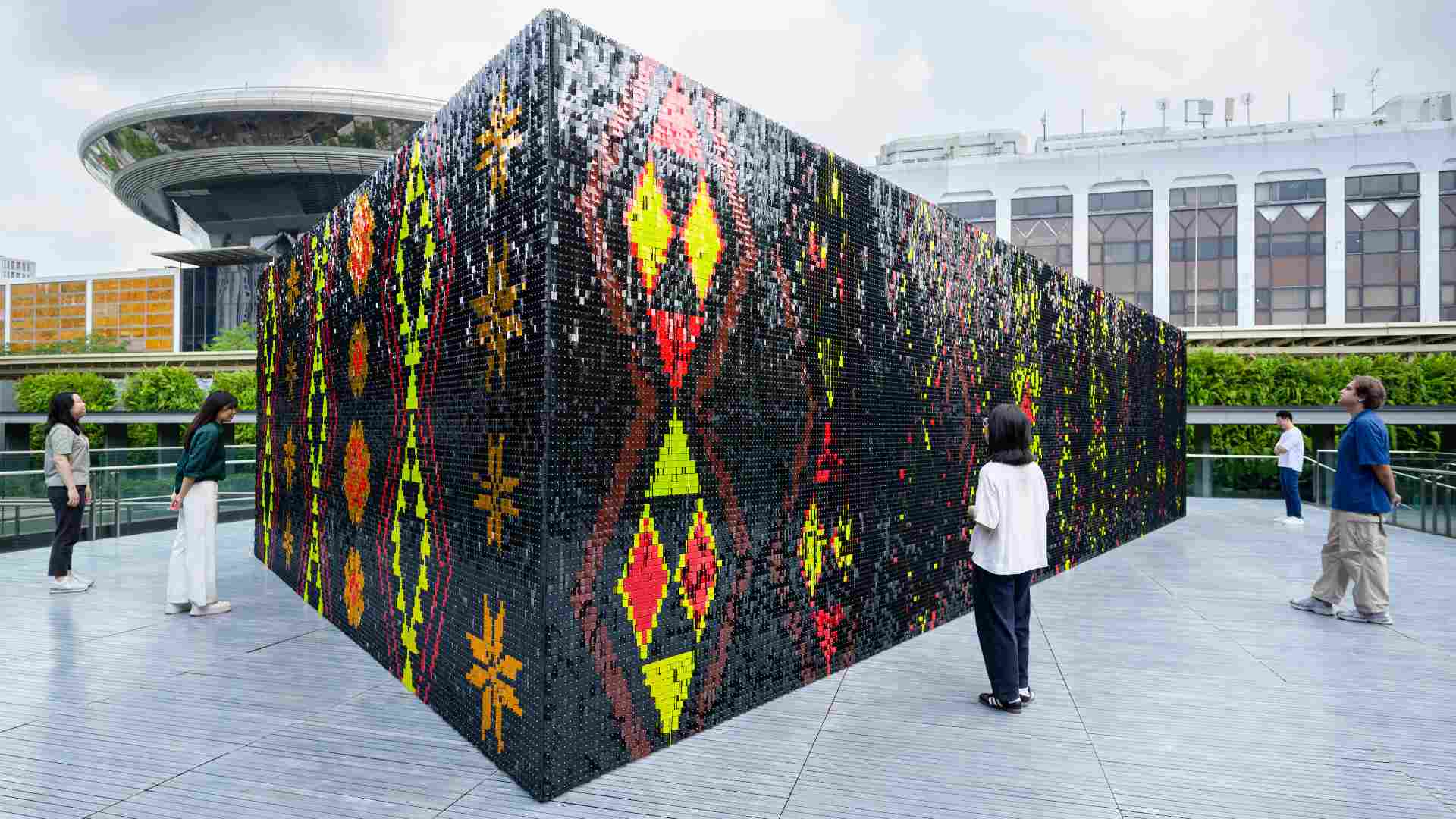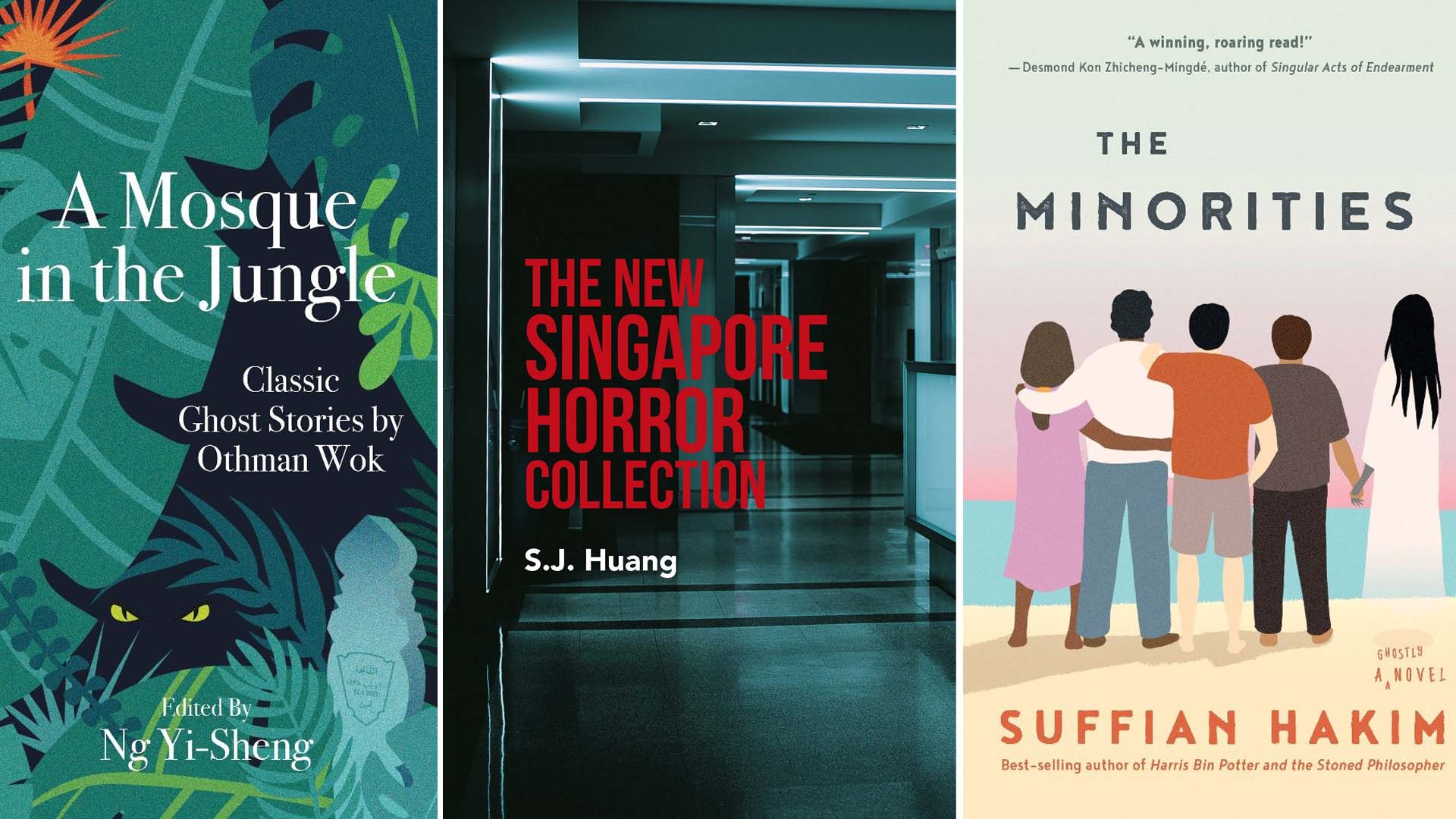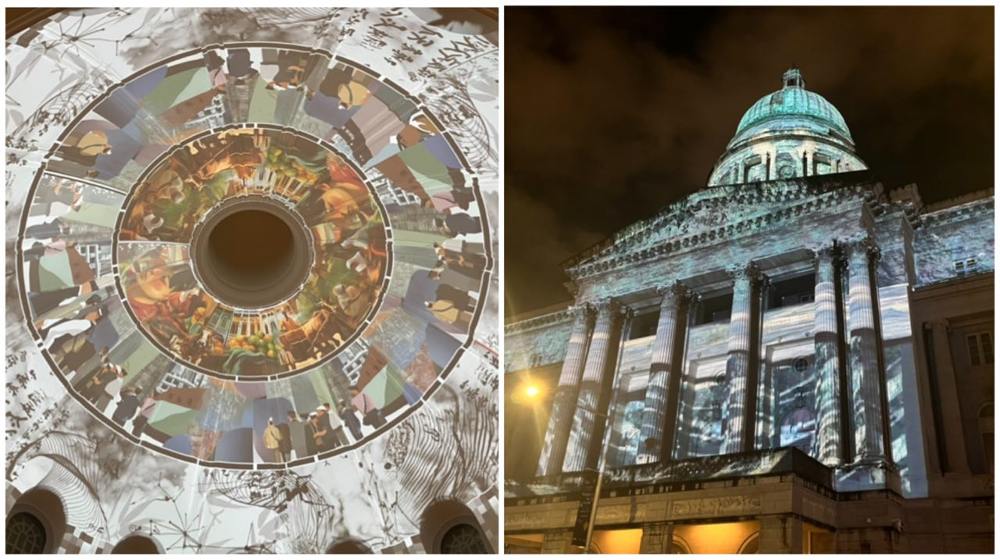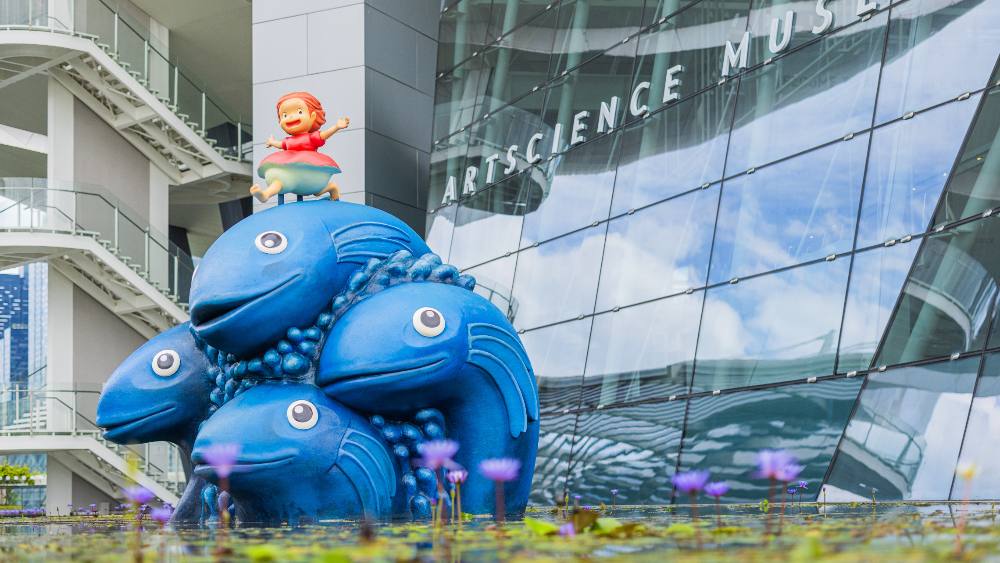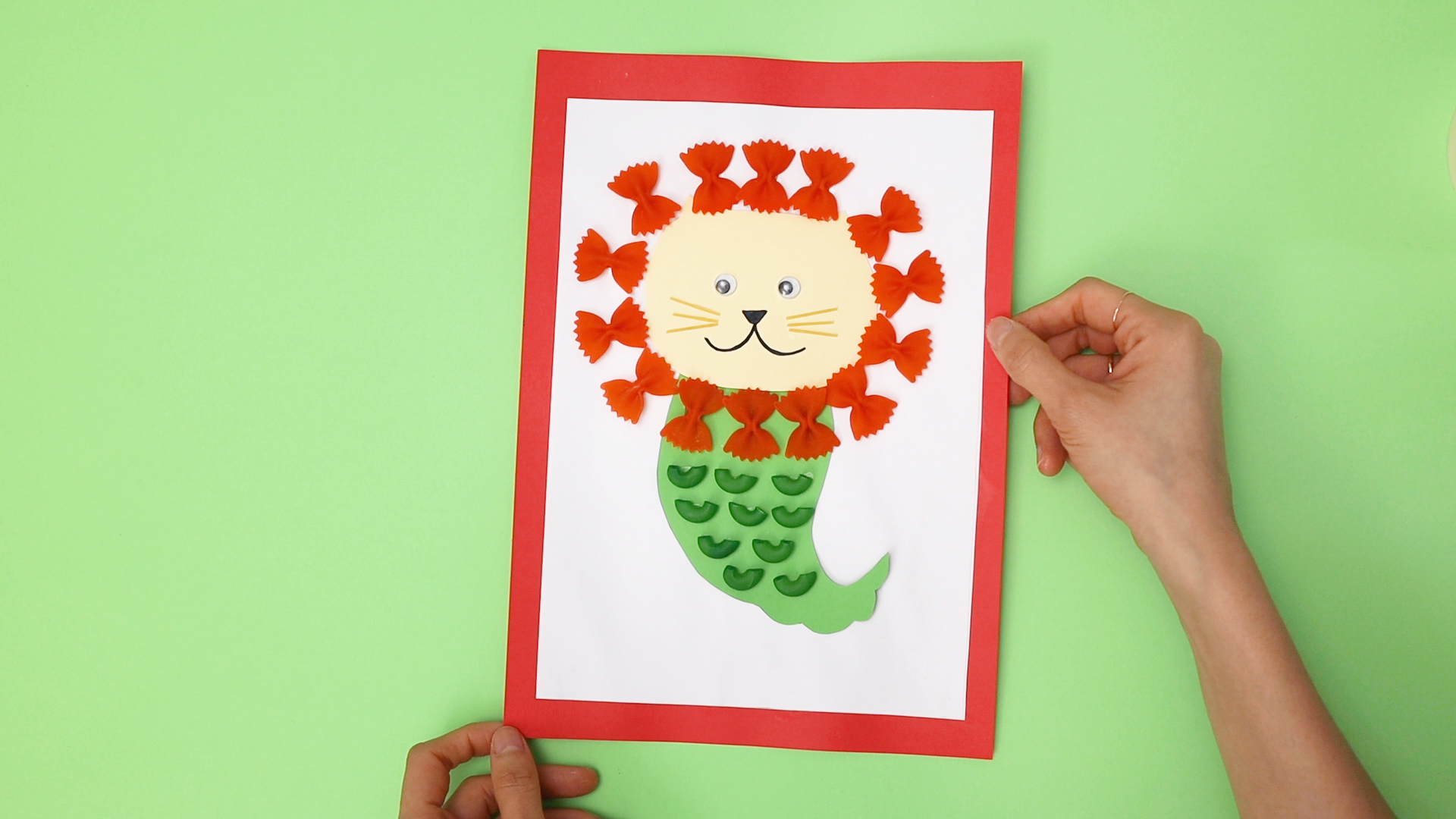114,000 Discs Make Up This Kinetic Artwork Atop Of National Gallery
If you enjoy being a tourist in your own backyard, Singapore’s Civic District has much to offer, especially in the form of National Monuments such as Victoria Theatre and Victoria Concert Hall, The Arts House, and Former Supreme Court (now National Gallery).
And sometimes, to fully appreciate a National Monument, the only way is up. In this case, we’re referring to the rooftop (level 5) of National Gallery’s City Hall Wing, in particular, the Ng Teng Fong Roof Garden, a space named after the founder of Far East Organization.
On rotation here are intriguing and often interactive artworks that are part of the annual Ng Teng Fong Roof Garden Commission Series, which kicked off in 2015 with sculptures by Vietnamese-born Danish artist Danh Vo (above).
Through the years, this outdoor location has hosted…
...“untitled 2018 (the infinite dimensions of smallness)”, a large-scale bamboo maze with a Japanese tea house at its centre by Rirkrit Tiravanija, …
...“Horizon Field Singapore” in 2021, a matrix of giant aluminum rings by Antony Gormley, …
...and an untitled, large-scale inflatable by Shilpa Gupta in 2023, among other sizeable artworks.
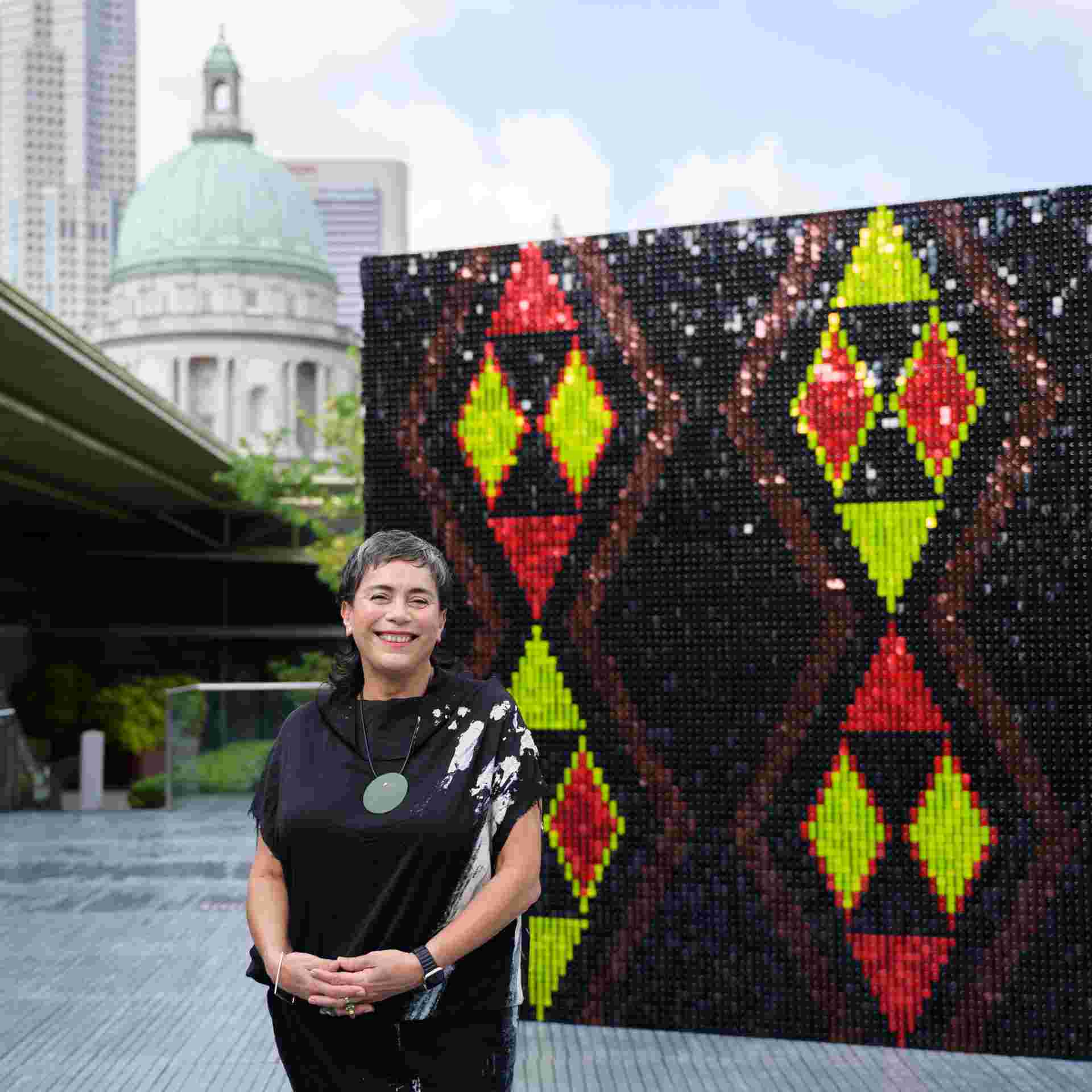 Contemporary artist Lisa Reihana. | IMAGE: NATIONAL GALLERY SINGAPORE
Contemporary artist Lisa Reihana. | IMAGE: NATIONAL GALLERY SINGAPORE
A playful new work, rich in culture and tradition
The seventh edition of the annual Ng Teng Fong Roof Garden Commission Series is marked by another large-scale installation, this time, a kinetic sculpture entitled “GLISTEN” by Aotearoa New Zealander contemporary artist Lisa Reihana. “Aotearoa” refers to “New Zealand” in the Māori language.
On display from today until 30 Mar 2025 (admission is free), the work is the result of the artist’s research into Māori ancestral knowledge, materials, and costume as well as the intricate world of Malaysian songket weaving.
The three-sided sculpture honours the traditions and craftsmanship of indigenous women weavers from these cultures, and features 114,000 shimmer discs that have been digitally and precisely plotted to create striking patterns.
But what exactly are these patterns we’re looking at?
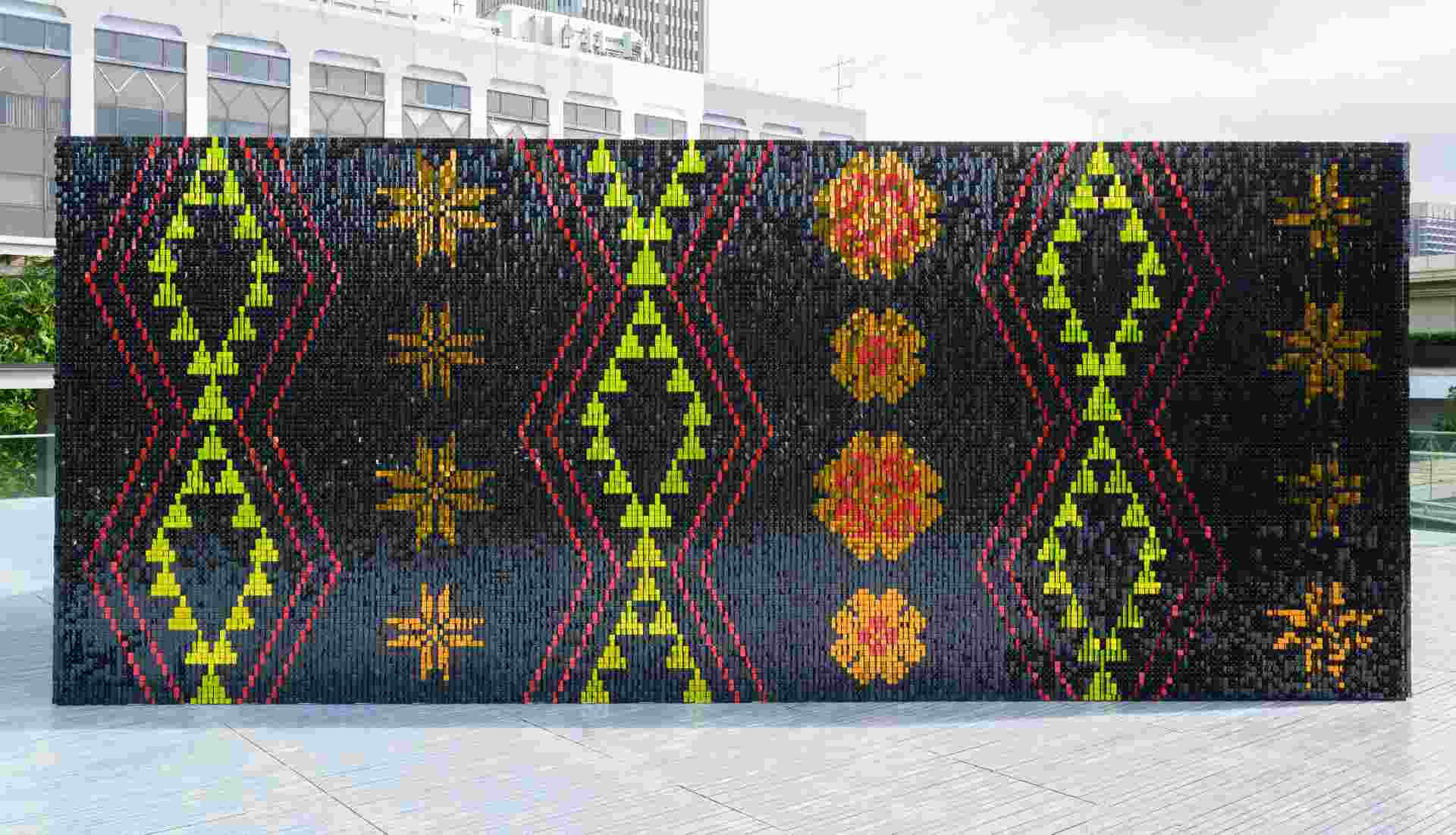 "GLISTEN" makes references to traditional Māori motifs. | IMAGE: NATIONAL GALLERY SINGAPORE
"GLISTEN" makes references to traditional Māori motifs. | IMAGE: NATIONAL GALLERY SINGAPORE
Māori Tāniko weaving
Tāniko is a traditional Māori finger-weaving technique used to decorate the borders of korowai (cloaks) with designs that tell Māori stories and values. Typically in black, red, and white, the patterns include triangles, diamonds, diagonal bars, and stepped shapes.
In “GLISTEN”, Reihana highlights patterns like pâtikitiki (the repetitive diamond or geometric pattern symbolising abundance and hospitality), and kaokao (the repetitic “M” signifying protection and inspired by warriors’ haka stance).
 The artist was also inspired by Malaysian songket patterns. | IMAGE: NATIONAL GALLERY SINGAPORE
The artist was also inspired by Malaysian songket patterns. | IMAGE: NATIONAL GALLERY SINGAPORE
Southeast Asian songket weaving
Songket is a luxurious textile, traditionally woven in silk or cotton with gold or silver threads, historically worn by Malay royalty during ceremonies. Reihana drew inspiration from Malaysian songket patterns, such as those in Malaysian artist Grace Selvanayagam’s book, “Songket: Malaysia’s Woven Treasure”.
Notable patterns in “GLISTEN” include Pucuk Rebung Gigi Yu, combining bamboo shoot and shark motifs, the lotus, and the mangosteen motif, which reflects inner feelings and spiritual state.
For more information about “GLISTEN” and programmes related to the installation, click here.
For the latest updates on Wonderwall.sg, be sure to follow us on TikTok, Telegram, Instagram, and Facebook. If you have a story idea for us, email us at [email protected].




.jpg?sfvrsn=19bc84b0_1)


